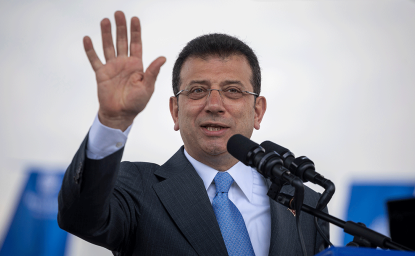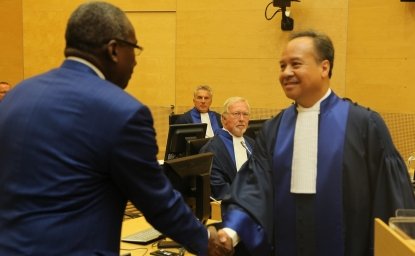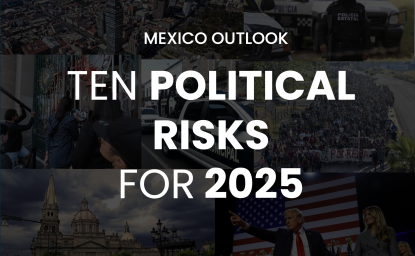Before explaining why I believe this characterization of criminal violence is misguided, it is important to acknowledge that this narrative is not entirely groundless. In the 1980s and 1990s, these countries experienced a transition from military or highly undemocratic governments to electoral and liberal-democratic regimes. This so-called democratic turn signaled, at least in principle, the demilitarization of police forces and the decriminalization of political forms of dissent. While far from perfect, these transitions gave shape to a narrative that asserts these countries went from a violence exercised by repressive governments to a violence committed by gangs, drug-traffickers and other common criminals with no political motivations and with allegedly no relation to state actors. According to this narrative then, the violence we witness today is not primarily that of the state against its citizens but that of so-called criminals against citizens. In this representation, the state is seen as an actor that uses violence chiefly to defend law-abiding citizens from so-called criminal actors.
Despite the appeal of this narrative, there are several reasons why this characterization of criminal violence as post-political or as unrelated to state-sponsored violence is flawed. I will center on four main reasons:
- First, it has become increasingly clear that transitions to democracy did not bring about the type of police reform and demilitarization that was much expected in these countries. In Mexico and northern Central America militarized forms of policing have continued under these countries’ democratic regimes and in many cases have actually become more acute, giving rise to several human rights violations. For instance, in Mexico, the participation of the military in policing functions has steadily increased since 2007 despite the alternation of power among different political parties at the executive level. More so, in Mexico and northern Central America, political interests are a key factor driving the adoption of repressive forms of policing. In particular, political elites’ promotion of “mano dura” policies is driven by an interest in securing more votes or in broadening their political base. A case in point is the president of Honduras, Nayib Bukele, who has gained greater popular support through his use of fist hand policies against gang members despite mounting evidence regarding these policies’ inefficacy to reduce crime and their detrimental consequences for citizens’ security.
- Second, while media representations tend to suggest that criminal violence emerges in places where the state is absent, there is plenty of evidence indicating that the state is actually present in many of the communities where these forms of violence exist, but it is present in irregular and reactive ways. That is to say, whilst the state tends to be “absent” in the sense of the steady provision of public goods and services, it is usually excessively present when it comes to militarized, repressive, and short-term interventions. A clear example of this can be seen in the series of military operations launched by former Mexican president Felipe Calderón in 2007 in the region known as “Tierra Caliente,” in the state of Michoacán. While municipalities in this region, such as Apatzingán, have historically been neglected and continue to be so in terms of public infrastructure and social programs, they became the scenario of short-term militarized responses where the state made itself present but only temporarily and in terms of repressive security policies.
- Third, in Mexico and the northern countries of Central America, there are strong connections between state actors and so-called criminal groups. These connections can be seen in several recent cases, including that of Juan Antonio “Tony Hernández,” a former congressman and brother of the current president of Honduras, who was sentenced by a U.S. court for smuggling cocaine into the northern country. In Guatemala, the 2019 removal of the United Nations-backed International Commission Against Impunity in Guatemala (CICIG), next to the highly contested appointment of a new anti-corruption prosecutor, have drawn hundreds of citizens to the streets to protest against president Alejandro Giammattei. For many national and international observers, Giammatei’s undermining of anti-corruption efforts has opened the door for politicians and public officials to form and expand linkages with organized criminal groups. In Mexico, in January of 2021, the government announced the complete exoneration of former minister of defense, general Salvador Cienfuegos, who had been arrested the prior year in the United States on drug-trafficking and corruption charges. This has raised serious questions regarding the Mexican government’s commitment to fight corruption and the ongoing linkages between state actors and criminal networks.
- Fourth, evidence suggests these so-called criminal actors are political. This becomes clear if we go beyond an understanding of the political centered on electoral processes and we look at the ways these actors participate in the creation of political and social orders.[3] These orders do not necessarily undermine state authority but many times intersect with the state's exclusion and criminalization of "others" considered dangerous or undesirable. Vigilantes and self-help groups exercising forms of social control or “social cleansing” in countries like Guatemala and Mexico are driven by an interest in defining the boundaries of acceptable and unacceptable behavior within the communities in which they operate. Just like state actors, they exercise a form of social and political control that divides between “good” and “bad” citizens and that contributes to exclude or expel those who challenge their rules. Even in terms of electoral processes, it is possible to observe, as we did during the last midterm election in Mexico in June of 2021, how criminal groups actively seek to influence political results.[4] During this election, there were several cases reported of political candidates, particularly mayors, being targeted and intimidated by criminal organizations because they did not collaborate or fully supported these organizations’ interests.
Over the last ten years, the surge in refugees arriving from Mexico and northern Central America to the United States has brought increasing international attention to the criminal violence impacting these countries. Most analyses have focus on the violence and harm generated by gangs, drug-traffickers, and other organized criminal organizations, which are often presented as non-political actors driven by economic interests and acting outside of the structures of the state. As this brief commentary suggests, this characterization is misguided. In order for policy responses to be effective, we need to be able to grasp the political dimensions of criminal violence and break away from linear narratives that characterize violence in this sub-region as post-political.
[1] An earlier version of this commentary was presented originally during the 24 Hour Conference on Global Organized Crime sponsored by the Global Initiative Against Transnational Organized Crime (December 1-2, 2021).
[2] This narrative is most clearly manifested in media coverage, which squarely privileges news about drug-trafficking organizations, gangs, and other criminal groups in these countries, and represents state-sponsored violence as driven primarily by an interest in controlling crime or reducing the impact of criminal organizations.
[3] For more on this and similar arguments, see: Gema Kloppe-Santamaría, In the Vortex of Violence: Lynching, Extralegal Justice and the State in Post-Revolutionary Mexico (University of California Press, 2020); Romain Le Cour Grandmaison, “Vigilar y Limpiar: Identification and Self-Help Justice – Making in Michoacán,Mexico, Politix 2016/3 (no. 115), p. 103-25.
[4] For a long-term analysis of the nexus between politics and crime in Mexico, see: Guillermo Trejo and Sandra Ley, Votes, Drugs, and Violence The Political Logic of Criminal Wars in Mexico (Cambridge University Press 2020); Benjamin Smith, The Dope: The Real History of the Mexican Drug Trade (W.W. Norton & Company, 2021).






